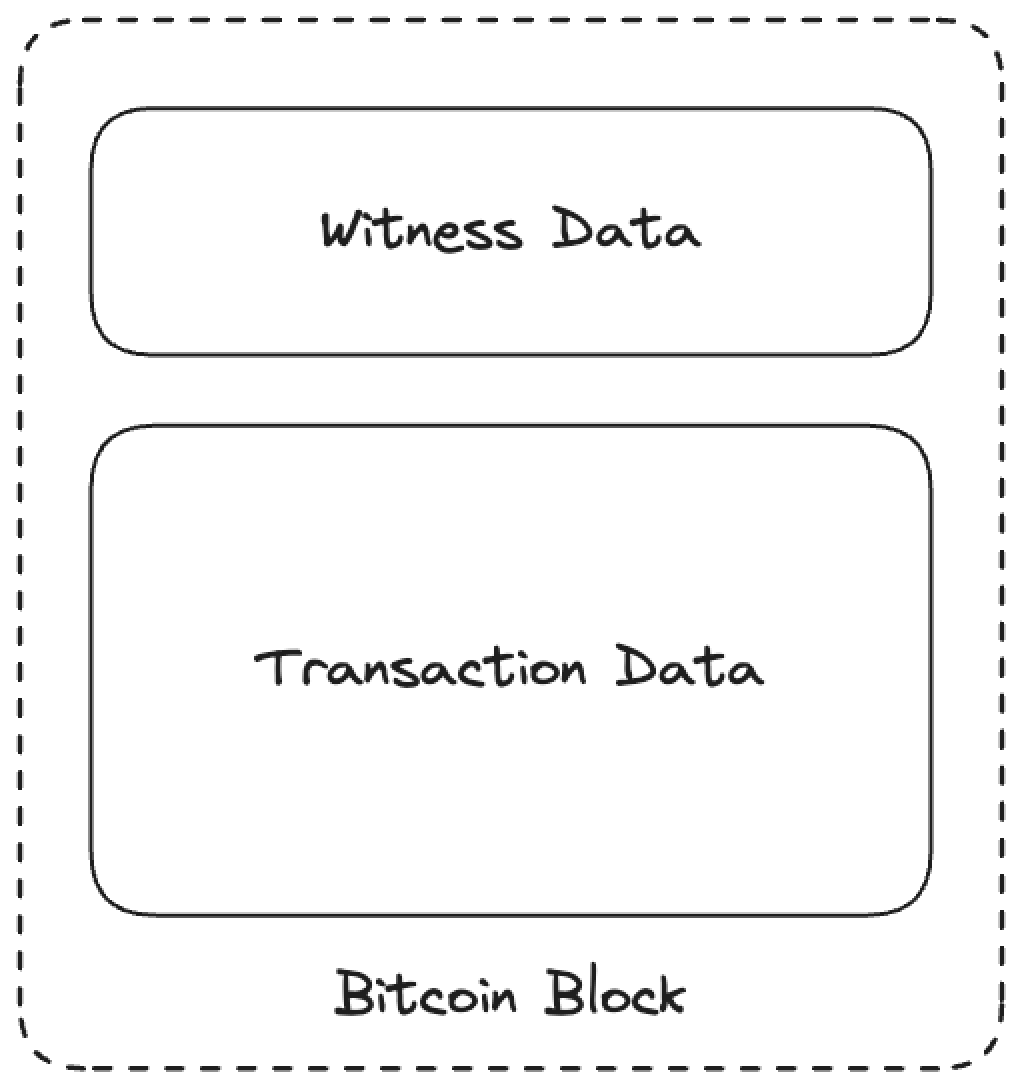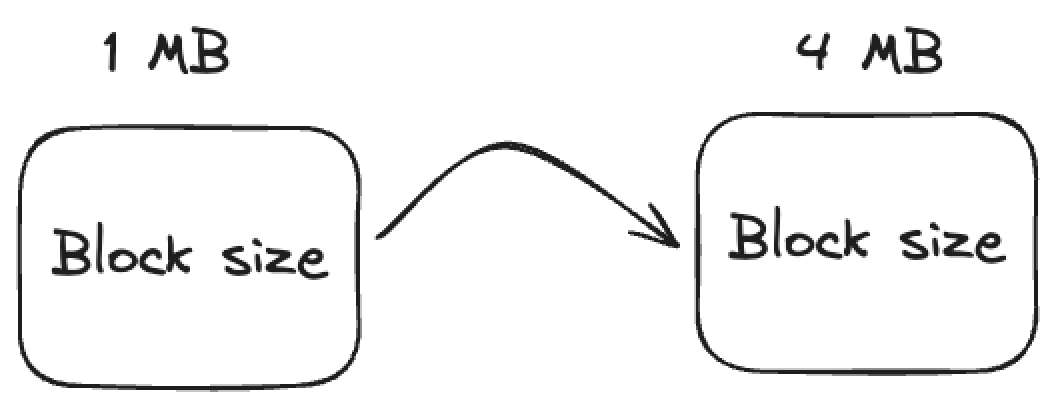Attempts to Scale Bitcoin
1. Segregated Witness (SegWit)
This upgrade marked a pivotal change by segregating / separating the witness data from the rest of the transaction data.
Reduced Transaction Weight: With Segwit, the calculation of transaction size for the purpose of determining fees is adjusted by giving less "weight" to the segregated witness data. This means that the part of the transaction that is segregated (the signatures) is counted as less than the rest of the transaction data when calculating its size. Therefore, even though the actual amount of data transmitted and stored by the network is the same, the "virtual size" of the transaction is smaller. This results in lower fees because fees are calculated based on this virtual size.
Increased Block Capacity: Additionally, by separating the witness data, Segwit transactions effectively increase the capacity of blocks without changing their size limit. This is because the witness data is counted differently, allowing more transactions to fit into a single block. More transactions per block can lead to lower fees during times of high demand, as the competition for space in a block decreases.

This reduced transaction times and increased block capacity beyond the initial 1MB limit set by Satoshi Nakamoto in 2010 .

2. Taproot
The Taproot upgrade introduced improvements in privacy, efficiency and smart contract capabilities on the Bitcoin network. This upgrade was activated as a soft fork at block 709,632 and incorporated three Bitcoin Improvement Proposals (BIPs):
-
Schnorr Signatures (BIP 340),
-
Taproot itself (BIP 341) and
-
Tapscript (BIP 342).
These BIPs collectively streamline transaction processing by allowing for the aggregation of multiple signatures, thereby making transactions both faster and more compact.
Why there is a Surge of demand to scale Bitcoins ?
Ordinals and Runes showed the demand for scalability.
1. Ordinals
Ordinals, enables the creation of immutable on-chain digital artifacts. This is projected to evolve into a substantial $4.5B market by 2025.
Casey Rodarmor is the creator of Ordinal Protocol and it was inspired from something called “atoms” in the original Bitcoin codebase.
Ordinals inscriptions surpassed the 65 million mark on April 11, less than one year and three months since their launch in January 2023 To date, Ordinals generated over $458 million worth of network fees for Bitcoin miners.
2.Runes
Runes utilizes Bitcoin’s UTXO model and the OP_RETURN opcode to offer a more efficient tokenization solution for the network than the BRC20 standard (based on the Ordinals protocols). It allows users to mint tokens on top of Bitcoin, which are generally memecoins.
The Runes system was also invented by Casey Rodarmor, who also conceptualized the Ordinals protocol in early 2023.
Runes generate over $135 million in fees in first week on Bitcoin network
What are Bitcoin Inscriptions?
Also known as Ordinal Inscriptions, Bitcoin Inscriptions are a new way of writing additional data or digital artifacts on the Bitcoin blockchain. The information engraved includes images, videos, texts, audio, and more. This extra data is attached to individual satoshis (sats), the smallest unit of Bitcoin representing 0.00000001 BTC.

